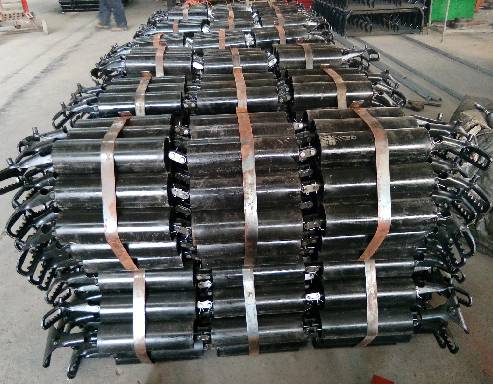 Afrikaans
Afrikaans  Albanian
Albanian  Amharic
Amharic  Arabic
Arabic  Armenian
Armenian  Azerbaijani
Azerbaijani  Basque
Basque  Belarusian
Belarusian  Bengali
Bengali  Bosnian
Bosnian  Bulgarian
Bulgarian  Catalan
Catalan  Cebuano
Cebuano  Corsican
Corsican  Croatian
Croatian  Czech
Czech  Danish
Danish  Dutch
Dutch  English
English  Esperanto
Esperanto  Estonian
Estonian  Finnish
Finnish  French
French  Frisian
Frisian  Galician
Galician  Georgian
Georgian  German
German  Greek
Greek  Gujarati
Gujarati  Haitian Creole
Haitian Creole  hausa
hausa  hawaiian
hawaiian  Hebrew
Hebrew  Hindi
Hindi  Miao
Miao  Hungarian
Hungarian  Icelandic
Icelandic  igbo
igbo  Indonesian
Indonesian  irish
irish  Italian
Italian  Japanese
Japanese  Javanese
Javanese  Kannada
Kannada  kazakh
kazakh  Khmer
Khmer  Rwandese
Rwandese  Korean
Korean  Kurdish
Kurdish  Kyrgyz
Kyrgyz  Lao
Lao  Latin
Latin  Latvian
Latvian  Lithuanian
Lithuanian  Luxembourgish
Luxembourgish  Macedonian
Macedonian  Malgashi
Malgashi  Malay
Malay  Malayalam
Malayalam  Maltese
Maltese  Maori
Maori  Marathi
Marathi  Mongolian
Mongolian  Myanmar
Myanmar  Nepali
Nepali  Norwegian
Norwegian  Norwegian
Norwegian  Occitan
Occitan  Pashto
Pashto  Persian
Persian  Polish
Polish  Portuguese
Portuguese  Punjabi
Punjabi  Romanian
Romanian  Russian
Russian  Samoan
Samoan  Scottish Gaelic
Scottish Gaelic  Serbian
Serbian  Sesotho
Sesotho  Shona
Shona  Sindhi
Sindhi  Sinhala
Sinhala  Slovak
Slovak  Slovenian
Slovenian  Somali
Somali  Spanish
Spanish  Sundanese
Sundanese  Swahili
Swahili  Swedish
Swedish  Tagalog
Tagalog  Tajik
Tajik  Tamil
Tamil  Tatar
Tatar  Telugu
Telugu  Thai
Thai  Turkish
Turkish  Turkmen
Turkmen  Ukrainian
Ukrainian  Urdu
Urdu  Uighur
Uighur  Uzbek
Uzbek  Vietnamese
Vietnamese  Welsh
Welsh  Bantu
Bantu  Yiddish
Yiddish  Yoruba
Yoruba  Zulu
Zulu head and tail pulley
Understanding Head and Tail Pulleys in Conveyor Systems
In industrial settings, the efficient movement of materials is crucial for maximizing productivity. One of the key components that facilitate this process is the conveyor system, which typically includes various types of pulleys, notably head and tail pulleys. These pulleys play a vital role in the operation of a conveyor belt, ensuring a smooth and reliable transfer of materials.
The Function of Pulleys
Head pulleys, located at the discharge end of the conveyor, serve as the driving force. They are usually powered by an electric motor that rotates the pulley and, in turn, moves the conveyor belt. As the belt travels over the head pulley, it transports materials from one point to another. This pulley is often equipped with additional features, such as a rubber lagging surface, to enhance traction and ensure that the belt does not slip during operation. Additionally, head pulleys may include a system for adjusting tension on the belt, which is essential for optimal performance and longevity.
On the other hand, tail pulleys are found at the loading end of the conveyor. Their primary function is to provide support and maintain the tension of the conveyor belt. Unlike head pulleys, tail pulleys are not powered; instead, they allow the belt to return to the initial loading point after it has discharged its loads. This return journey is critical for maintaining a continuous and efficient operation. Tail pulleys can also be designed with a crowned shape to facilitate the proper alignment of the belt, preventing it from drifting off course and reducing wear on the edges.
Types and Materials
head and tail pulley

Both head and tail pulleys can come in various types and materials, depending on the requirements of the specific application
. Common construction materials include steel and stainless steel, which provide durability and resistance to wear. Moreover, some pulleys can be custom-engineered with specific coatings or treatments to withstand harsh environmental conditions, such as extreme temperatures or corrosive substances.Importance of Maintenance
Regular maintenance of head and tail pulleys is essential for ensuring the longevity and efficiency of a conveyor system. Routine inspections can help identify wear and tear, misalignments, or any damage that could lead to operational failures. Proper lubrication of the bearings and timely replacement of worn-out components can prevent costly downtimes and improve overall performance.
Conclusion
In summary, head and tail pulleys are integral components of conveyor systems, each serving distinct yet complementary functions. Head pulleys drive the belt and facilitate the movement of materials, while tail pulleys support the return journey, ensuring the continuous operation of the system. Understanding the roles and maintenance needs of these pulleys is vital for industries that rely on efficient material handling solutions. When selected and maintained properly, head and tail pulleys can significantly enhance the productivity and effectiveness of conveyor systems, streamlining operations across various sectors.
-
Revolutionizing Conveyor Reliability with Advanced Rubber Lagging PulleysNewsJul.22,2025
-
Powering Precision and Durability with Expert Manufacturers of Conveyor ComponentsNewsJul.22,2025
-
Optimizing Conveyor Systems with Advanced Conveyor AccessoriesNewsJul.22,2025
-
Maximize Conveyor Efficiency with Quality Conveyor Idler PulleysNewsJul.22,2025
-
Future-Proof Your Conveyor System with High-Performance Polyurethane RollerNewsJul.22,2025
-
Driving Efficiency Forward with Quality Idlers and RollersNewsJul.22,2025





























